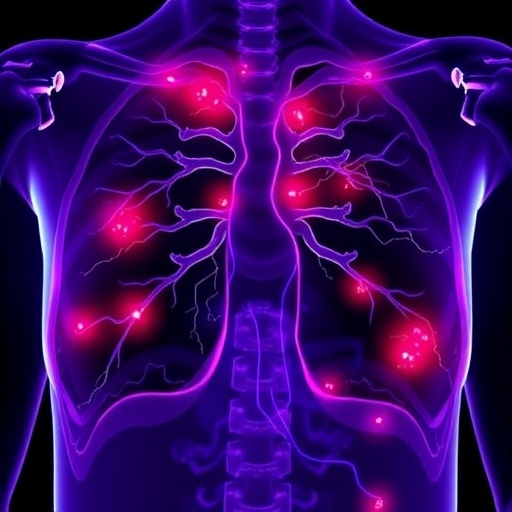Cachexia is a multifactorial syndrome that occurs in patients suffering from chronic infections such as HIV, tuberculosis and malaria. In addition, 50% to 80% of cancer patients are affected by cachexia (Argiles JM et al. Nature Reviews Cancer 2014). Due to reduced food intake and altered metabolism, patients unintentionally lose body weight and lose their strength. Their fat reserves and skeletal muscle mass are progressively depleted, which cannot be reversed by nutritional supplementation. Cachexia severely impacts the patient’s quality of life and worsens the outcome of ongoing therapies. Despite this tremendous clinical need the standards of diagnosis and care for cachectic patients remain insufficient and effective treatment options are elusive so far.
In recent years, studies using experimental models of cancer-associated cachexia greatly improved our understanding of how inflammation may trigger cachexia and the associated metabolic alterations. These studies showed that secreted inflammatory factors can induce weight loss through either direct or indirect mechanisms that affect appetite and alter fat and muscle metabolism. In the context of infectious diseases, the knowledge of cachexia is lagging behind, and it is not understood whether the same or different mechanisms of cachexia occur during infection and cancer.
The research group of Andreas Bergthaler, Principal Investigator at CeMM, together with collaboration partners from the University of Graz, the Medical University of Vienna as well as international collaboration partners from Germany, Switzerland and the USA elucidated a novel mechanism of how chronic viral infection leads to cachexia. These results are published in the recent issue of Nature Immunology (DOI: 10.1038/s41590-019-0397-y) and describe the organism-wide pathophysiological changes associated with cachexia during chronic viral infection.
By using well-controlled animal infection models, the researchers identified the key molecular players that lead to cachexia. Viral infection resulted in a reduction of body weight. This weight loss could only partially be explained by decreased food intake and it was not prevented by nutritional supplementation.
The researchers went on to show that the viral infection led to a severe reorganization of the architecture of the fat tissue which coincided with the activation of lipolysis, a molecular cascade of processes that the body uses to melt its fat depots. Yet, none of the inflammatory mediators known to induce cachexia in cancer seemed to play an important role during infection. “This came as quite a surprise to us”, says first-author of the study, PhD student Hatoon Baazim.
The researchers continued to study other potential mechanisms and realized that CD8 T cells were responsible for triggering cachexia. CD8 T cells are important cells of the immune system, which are able to recognize and kill virus-infected cells or cancer cells. In this study the researchers could show that in order to trigger cachexia, the CD8 T cells required additional signals from the antiviral cytokines type I interferons and needed to recognize the virus.
This study by Baazim et al. elucidates the inflammatory drivers of infection-associated cachexia and offers a valuable model for future investigations about the mechanisms of infection-associated cachexia to the international research community. This will allow for new molecular insights into how infectious pathogens including HIV, mycobacterium tuberculosis or various parasites cause cachexia. In addition, as last-author Dr. Andreas Bergthaler puts it, “We are convinced that future studies that compare cachexia in the context of both infection and cancer, ideally through the integration of experimental models and clinical patient data, are going to provide much needed advancements for our understanding of this still very mysterious disease.” Such new insights from basic research may stimulate the development of innovative therapeutic strategies to alleviate the burden of cachexia and associated life-threatening chronic diseases.
###
The study has been supported by the European Research Council (ERC), the Austrian Academy of Sciences, the Austrian Science Fund (FWF), the German Research Foundation (DFG) and the US National Institutes of Health.
The mission of CeMM Research Center for Molecular Medicine of the Austrian Academy of Sciences is to achieve maximum scientific innovation in molecular medicine to improve healthcare. At CeMM, an international and creative team of scientists and medical doctors pursues free-minded basic life science research in a large and vibrant hospital environment of outstanding medical tradition and practice. CeMM’s research is based on post-genomic technologies and focuses on societally important diseases, such as immune disorders and infections, cancer and metabolic disorders. CeMM operates in a unique mode of super-cooperation, connecting biology with medicine, experiments with computation, discovery with translation, and science with society and the arts. The goal of CeMM is to pioneer the science that nurtures the precise, personalized, predictive and preventive medicine of the future. CeMM trains a modern blend of biomedical scientists and is located at the campus of the General Hospital and the Medical University of Vienna.
Media Contact
Eva Schweng
[email protected]
http://dx.




